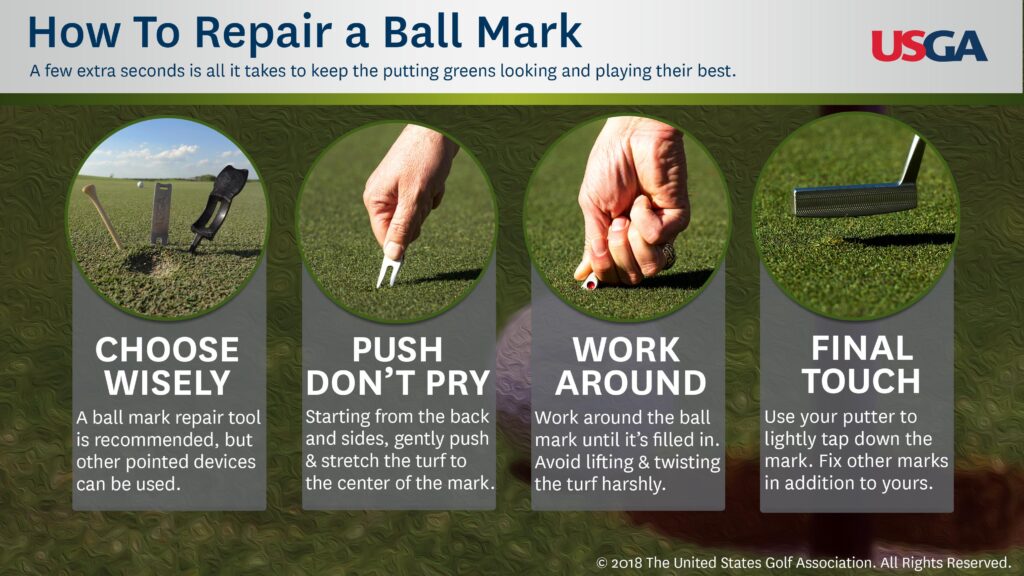Golfers know that maintaining the pristine condition of the greens is essential to the integrity and enjoyment of the game. One of the most common blemishes found on putting surfaces is the ball mark-a small, but noticeable dent left by the impact of a golf ball. Fixing these marks quickly and correctly not only preserves the quality of the green but also shows respect for fellow players and the course itself. In this article, we outline a simple, expert-approved method to properly repair a ball mark in just 10 seconds, helping golfers contribute to better playing conditions with minimal interruption to their game.
Understanding the Anatomy of a Ball Mark to Ensure Effective Repair
When a golf ball lands on the green, it often leaves behind a distinct impression known as a ball mark or pitch mark. This mark is essentially a small depression caused by the impact of the ball, typically characterized by a raised ring of turf surrounding a sunken center. Understanding the structure of this damage is crucial for effective repair, as improper handling can exacerbate damage, slowing the green’s recovery and affecting play for others. The central portion, or the crater, results from the compression of soil and grass blades being pushed down or torn away, while the raised edges are caused by the upward displacement of surrounding turf. Recognizing these parts helps you know exactly where to focus your repair efforts.
Effective repair begins with addressing both the depression and the turf surrounding it. Core steps include:
- Gently lifting the edges of the mark without twisting the soil
- Pushing the displaced turf back towards the center rather than pulling it outward
- Pressing down lightly to restore the surface to its original level
- Avoiding over-compression, which can damage roots
The goal is to maintain the integrity of the grass’s root system while restoring the green’s smoothness. Below is a simple breakdown table illustrating the anatomy and the corresponding repair focus areas:
| Ball Mark Area | Description | Repair Focus |
|---|---|---|
| Central Crater | Sunken area caused by impact | Fill by pushing turf inward |
| Raised Edges | Uplifted grass around crater | Gently lift and reposition |
| Surrounding Turf | Healthy grass around mark | Press lightly to restore evenness |
Essential Tools and Techniques for Swiftly Restoring the Green’s Surface
Restoring the integrity of a green’s surface after a ball mark is crucial for maintaining smooth play and the course’s overall aesthetic. The most vital tools for this quick repair include a ball mark repair tool-preferably a forked design-, a groove ruler for precision depth checks, and a soft towel or brush to clean and smooth the area. These essentials allow golfers and course staff to tackle damage swiftly without further compromising the delicate grass blades or soil density.
Equipped with the right tools, technique becomes the defining factor in effectiveness. Begin by gently inserting the repair fork around the edge of the depression, working inward and upward to reconnect displaced turf to its roots. Avoid pushing straight down or lifting the center to prevent tearing. Once the grass fibers are aligned, lightly pat the repaired spot with the towel to ensure a uniform surface ready for rolling. Below is a quick reference for proper tool use and common errors:
| Tool | Correct Use | Common Mistakes |
|---|---|---|
| Ball Mark Repair Tool | Lift edges inward gently, avoid center pressure | Pushing down center, causing further damage |
| Groove Ruler | Check depression depth for consistency | Ignoring uneven surface depth |
| Towel/Brush | Lightly smooth and clean after repair | Overbrushing, leading to turf disturbance |
To Wrap It Up
In just 10 seconds, properly fixing a ball mark can preserve the quality of the greens and enhance the playing experience for all golfers. By following these straightforward steps, players contribute to maintaining the course’s pristine condition, demonstrating respect for the game and fellow competitors. As golf continues to grow in popularity, quick and effective maintenance of ball marks remains a simple yet vital skill every golfer should master.








